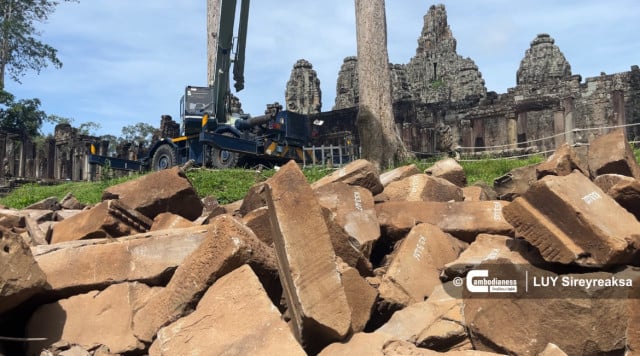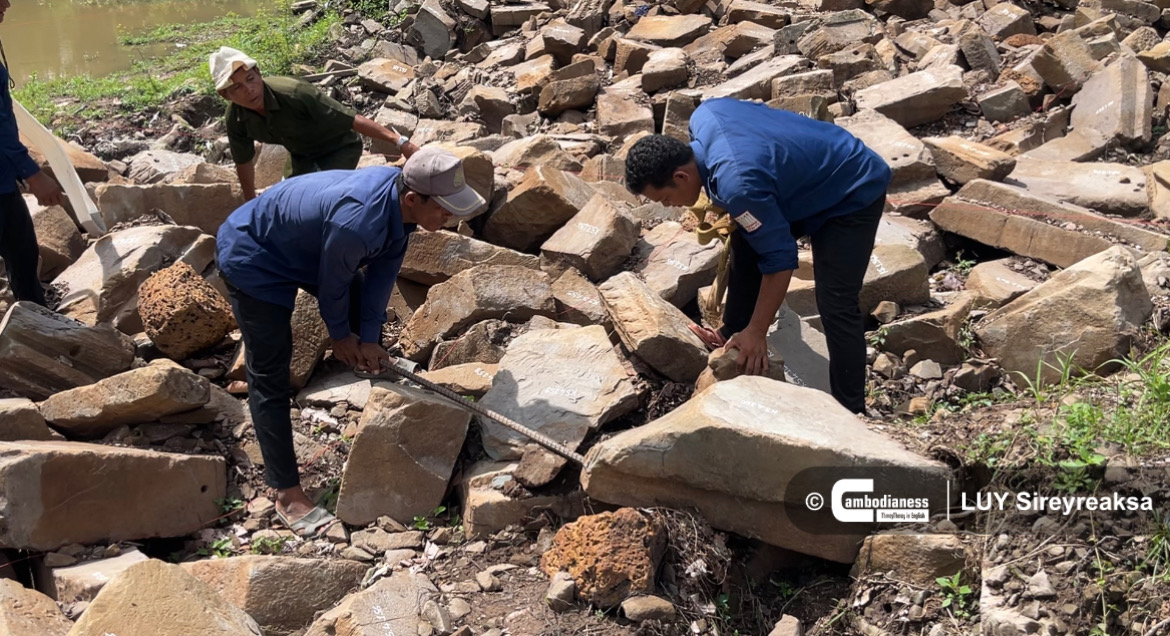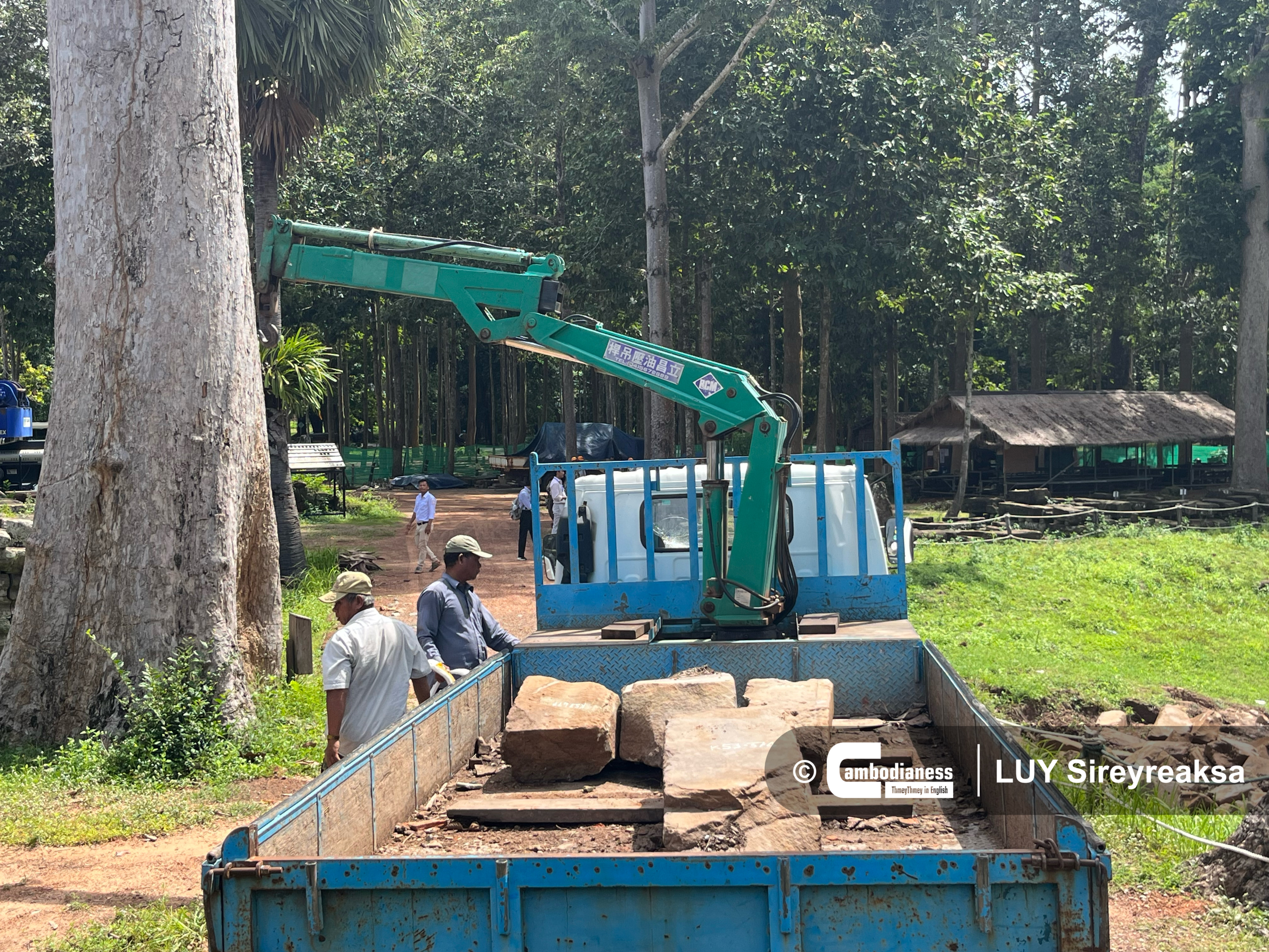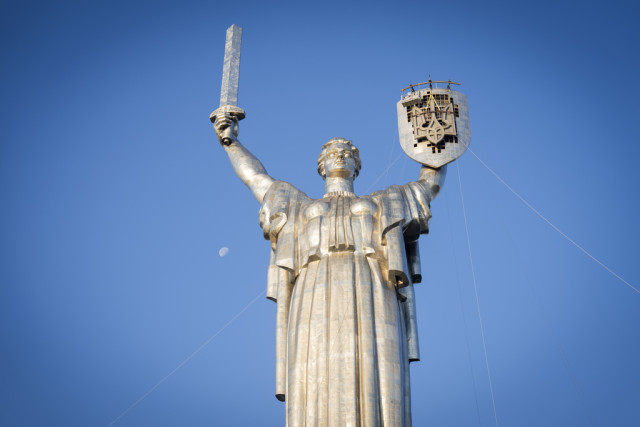Restoring the Ponds of the Temple with the Iconic Faces

- By Zul Rorvy
- August 12, 2023 2:00 PM
SIEM REAP — Standing at the centre of Angkor Thom—the city that Jayavarman VII built as the capital of his empire—the Bayon temple is especially known for the faces on its towers that look in the four directions: north, south, east and west.
Its grounds feature ponds and two of them this year are under restoration. The work is being handled by the Department of Preservation and Archeology of the APSARA National Authority—the Cambodian government agency managing the Angkor Archeological Park.
The restoration project is no small operation. As Chhouk Somala, head of the Art Registration Team of the Department of Preservation and Archaeology at APSARA Authority, explained during an interview, this has involved recording and moving around 20,000 blocks of stone.
_1691807748.png)
Zul Rorvy: Why does the project require the stones to be moved away from the ponds?
Chhouk Somala: The structure is almost a millennium old as it was constructed by King Jayavarman VII in the late 12th century. Some parts of the temple were no longer functioning properly and that is why our team from the APSARA National Authority is now restoring the two ponds: one on the northern side and the other on the southern side of the temple’s cruciform entrance. The southern pond is completely covered with sediments, making it hard to spot. However, the northern side still retains some of its shape although many temple stones were dumped into it. The two ponds are original features of the temple, going back to the time it was first built.
_1691807851.png)
Zul Rorvy: How did those stones end up in the ponds?
Chhouk Somala: Over time, stones that made up the upper foundation, the gallery and its roof have fallen down naturally. Perhaps, it was in 1919 when some French archaeologists came to sort out some of the loose stones. The remaining stones were somehow dumped into this pond right here.
Zul Rorvy: Would you explain how the ponds are being restored?
Chhouk Somala: First, we have to come up with a technical plan to remove this huge pile of stones. We started by numerically labelling the stones and taking photographs from above, one layer at the time. After the top layer is removed, we repeat the same process with the following layers. Documenting the orientation of the stones is also important so that we can know whether they were intentionally piled up or naturally fell here. The meticulous recording determines the function of the stones: whether they were part of the roof, the door frame or the flooring. After that, the classified stones will be transported and laid in order at one spot of the temple. Later on, we will work on the pond to know more about its depth and dimension so that it can be easier for us to perform archaeological restoration. We cannot excavate more than its original shape.

Zul Rorvy: Would you explain why?
Chhouk Somala: This is the value of a heritage. If we overdo it, it is like we are destroying the heritage. The restoration is important as it tries to protect our ancestors’ legacy. After the excavation, we will renovate the pond’s edges by studying its stone type and whether to replace it with new stones. But this is not a conclusion. The authority will keep a close watch on other areas, which demand immediate intervention.

Zul Rorvy: When will the project be completed?
Chhouk Somala: We only began this year. So far, around 50 percent of the stones have been pulled out, classified, and properly stored. There still is a lot more to do. It is a bit harder than expected due to high rainfall. We cannot say for sure when it will end. As of now, the view is not that great with all this machinery. However, once it is completed, tourists will be able to come and watch a view similar to that in ancient times. This is part of promoting our heritage.

Conducted in Khmer for ThmeyThmey News, the interview was translated by Luy Sirey Reaksa for Cambodianess News.
To watch the interview in Khmer, click on this link.















